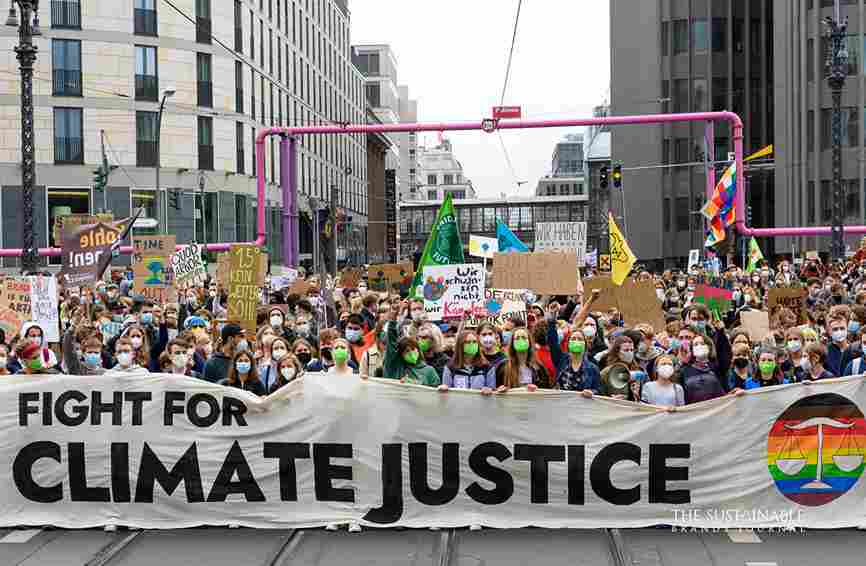
Overcoming Obstacles: Navigating the Challenges of Achieving Sustainable Development
Sustainable development is a broad term that defines investments, policies, and projects with an aim to meet the needs of the present generation without compromising the future generation’s ability to meet their own. Sustainable development goals are usually centered around three dimensions: economic, environmental, and social. However, achieving these goals is not as easy as it sounds. So, what makes achieving sustainable development so difficult? Well, it’s a mix of a lot of factors. These include climate change, environmental degradation, limited resources, economic disparities, social exclusion, etc..
This blog will explore the key challenges and how they can be navigated to achieve sustainable development.
Understanding the Key Challenges
Here are the key challenges hindering sustainable development.
- Economic and Social Barriers
Achieving sustainable development is significantly hindered by economic and social barriers, with poverty, inequality, and socio-economic disparities playing central roles. In regions where poverty prevails, limited education, healthcare, and technology access can stifle development initiatives.
This situation is exacerbated by inequality, which often leads to a concentration of wealth and opportunities in the hands of a few, leaving the majority without the means to contribute to or benefit from sustainable development. Such disparities not only affect individual and community growth but also pose challenges to implementing universal sustainability measures that are inclusive and equitable.
- Environmental Concerns
Environmental degradation and climate change are perhaps the most pressing challenges to sustainable development. The relentless exploitation of natural resources results in biodiversity loss, water scarcity, and decreased agricultural productivity, among other issues. Climate change compounds these problems by altering weather patterns, increasing the frequency and severity of natural disasters, and disrupting ecosystems.
- Cultural and Legal Differences
The path to sustainable development also varies widely across cultural and legal landscapes. What works in one region may not be feasible in another due to varying cultural values and norms. Initiatives that require significant changes in lifestyle or traditional practices might face resistance.
Legally, countries differ in their regulatory frameworks governing environmental protection, labor rights, and corporate governance, which can affect the implementation of sustainable practices.
The Role of Technological Innovations

Technological innovations can lead to more efficient resource use, waste reduction, and sustainable infrastructure development.
For instance, renewable energy technologies like solar and wind power reduce reliance on fossil fuels and decrease greenhouse gas emissions. Smart agriculture technologies, including precision farming and AI-driven resource management systems, optimize the use of water and fertilizers, enhancing productivity while minimizing environmental impact.
Moreover, technologies that enable the conversion of waste into energy or new materials can significantly reduce the volume of waste and its environmental impact.
For example, pyrolysis plants transform plastic waste into fuel, offering a dual benefit of waste reduction and energy production. In construction, green building materials and techniques, such as using recycled materials and energy-efficient designs, contribute to the sustainability of urban environments.
Implementing these technologies supports environmental goals and fosters economic growth by creating new industries and job opportunities. However, adopting such technologies requires supportive policies, investment in research and development, and public and private sector collaboration.
Strategies for Effective Transformation
Business Transformation Strategies
Incorporating sustainability into business operations can significantly enhance a company’s impact on environmental and societal fronts. A successful sustainability transformation hinges on integrating environmental, social, and governance (ESG) considerations into every aspect of the business, from core operations to strategic planning.
To begin, businesses must develop a clear sustainability strategy aligned with their mission and goals. This strategy should address the most material ESG aspects and prioritize long-term value creation.
Building on this foundation, companies should invest in high-quality data to monitor and manage their sustainability performance. This includes setting up systems to track progress and aligning these efforts with their strategic objectives.
Furthermore, the engagement of the Board of Directors and integration of sustainability goals across various organizational functions such as finance, marketing, and R&D are vital for embedding sustainability deep within the corporate structure.
Community and Policy Engagement
Engaging with local communities and policymakers is critical for adopting sustainable practices. By involving communities in decision-making processes, businesses and governments can ensure that sustainability initiatives are more tailored and effective, increasing their impact and acceptance.
Moreover, collaborative efforts between companies, governments, and non-governmental organizations can help align goals, leverage resources, and standardize sustainability metrics. It is essential for addressing widespread sustainability challenges and achieving significant systemic changes.
Navigating Through Economic Shocks and Crises
Economic downturns, market volatility, and global crises severely impact sustainable development goals by disrupting economic growth and exacerbating inequalities. To mitigate these effects, it’s crucial to implement structural policies to build resilience, such as enhancing healthcare systems, improving social safety nets, and bolstering public administration efficiency.
The pandemic has accelerated digitalization, highlighting the need for policies to bridge digital divides and foster digital skills to support a resilient recovery. Moreover, recovery packages focusing on environmental sustainability can address immediate economic needs and bolster long-term resilience.
Collaborative Efforts and Global Partnerships
Achieving SDGs necessitates robust international cooperation and partnerships. Global challenges like climate change and pandemics require collective efforts and shared solutions. International collaborations can also enhance the effectiveness of domestic policies by fostering exchanges in technology, resources, and knowledge.
Partnerships among countries and the involvement of international organizations, NGOs, and the private sector are pivotal in implementing comprehensive strategies that address immediate and systemic sustainability challenges.
The Path Forward: Key Actions for Future Progress
Achieving sustainable development demands actionable strategies and persistent efforts across all sectors of society. Prioritizing investments in green technologies and sustainable infrastructure is also essential. Policies that enhance labor mobility, support vulnerable populations, and promote job creation in emerging sectors should be the focus.
Encouraging innovation and ensuring that economic growth is inclusive and environmentally sustainable are also critical. Also, fostering a lifelong learning culture and enhancing access to education can equip individuals and communities to adapt to new technologies and market demands, driving sustainable progress.
Collaborative initiatives that leverage technology, innovative financing, and community engagement to address the root causes of sustainability challenges are essential. Each step towards overcoming these barriers brings us closer to reaching our global sustainability goals and ensures a healthier, more equitable world for future generations.

Prachi, an accomplished Chief-Editor at The Sustainable Brands Journal, has 15+ years of experience in Europe, the Middle East, and India, managing 90+ global sustainable brands. She’s a prolific writer in sustainability, contributing to various publications. Prachi’s unwavering passion and expertise make her a recognized authority, driving positive change and inspiring a sustainable future.





